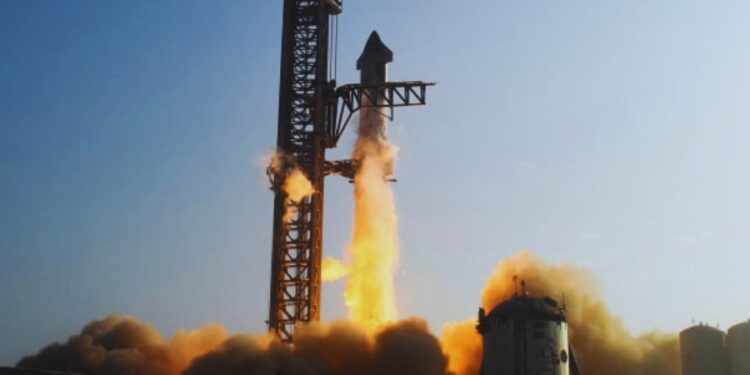The area surrounding Earth is becoming an increasingly crowded place, and the trend is expected to continue. While this growth in space exploration is largely positive, it also carries significant risks. Former NASA administrator Sean O’Keefe recently addressed these concerns, highlighting the urgent need for international regulations to govern human activity in low-Earth orbit.

A Multitude of Satellites and Mounting Debris
Since the 1950s, nearly 17,000 satellites have been launched, with an estimated 12,000 still orbiting Earth today. However, only around 9,000 remain operational. Adding to the congestion is a concerning amount of space debris – bits and pieces of defunct spacecraft and satellites – with monitoring systems tracking over 35,000 such objects currently circling the planet. The total mass of orbiting human-made objects is a staggering 11,000 tons.
The situation is likely to worsen in the coming years. Companies like SpaceX, Amazon, and Astra Space all have plans to launch tens of thousands of additional satellites to bolster internet connectivity. SpaceX’s Starlink constellation alone could reach 40,000 satellites if fully deployed.
The Dangers of a Crowded Orbit
O’Keefe warns of two primary threats associated with this growing congestion. The first is the heightened risk of collisions. Even a minor bump between objects traveling at 17,500 miles per hour can be catastrophic, potentially destroying or severely damaging operational satellites and spacecraft. O’Keefe compares the situation to rush hour traffic, but with the crucial difference that there’s no swerving or braking possible in space.
Former NASA scientist Donald Kessler first raised this concern in a 1978 paper, outlining a potential scenario where collisions create a cascading effect. Each collision would generate more debris, increasing the likelihood of further collisions, creating a self-perpetuating cycle that could render space travel and satellite operations extremely hazardous.
The possibility is not purely theoretical; such collisions have already happened. A 2009 incident involving an active communications satellite and a defunct Russian satellite resulted in the creation of nearly 2,000 new pieces of space debris. The International Space Station has also been forced to dodge debris on numerous occasions, even sustaining minor damage from a two-inch object in 2021.
The second danger is the potential for falling debris. If satellites are not designed to burn up completely upon re-entering Earth’s atmosphere, they could break apart and rain down fragments on the planet’s surface. The Federal Aviation Administration estimates that nearly 30,000 hazardous fragments could re-enter by 2035, potentially causing damage to aircraft or injuring people.
A Call for International Governance: Taming the Wild West
The core challenge, according to O’Keefe, lies in the lack of a central governing body for low-Earth orbit. Space exploration has historically operated under a principle of self-interest, with no international authority to enforce regulations. O’Keefe emphasizes the need for a governance structure with the power to establish safety standards and potentially even prevent launches that don’t meet specific criteria for debris mitigation upon mission completion.
The most critical requirement, according to O’Keefe, is a mandate for all satellites to be designed for complete atmospheric re-entry burnup. Fortunately, many companies, including SpaceX, are already adhering to this standard.
However, such practices are not universally enforced. Organizations like NASA and the Space Safety Coalition are working to establish best practices and explore methods for cleaning up existing space debris. Proposals include capturing debris with nets, but a truly effective solution hinges on international cooperation and a globally agreed-upon set of regulations.
O’Keefe expresses his reservations about the likelihood of reaching such an international agreement in the near future. The absence of a policing authority or a reliable capability for debris removal makes addressing this issue particularly complex. With various nations unwilling to cede sovereignty over space activities, the situation in low-Earth orbit may very well resemble the Wild West for some time to come.
A Looming Threat: The Kessler Syndrome
The potential consequences of an uncontrolled debris environment in low-Earth orbit are dire. The scenario outlined by Donald Kessler, known as the Kessler Syndrome, paints a frightening picture.
Imagine a cascading series of collisions, each generating increasing amounts of debris. These ever-more-numerous objects would pinwheel around Earth at high speeds, significantly increasing the probability of further collisions. Eventually, a critical mass of debris could be reached, rendering low-Earth orbit an impassable gauntlet for spacecraft, effectively crippling space exploration and satellite operations for decades or even centuries.
While the Kessler Syndrome may seem like science fiction, O’Keefe and other space experts warn that it is a very real possibility if action isn’t taken soon to mitigate the growing congestion and debris in low-Earth orbit.
Without international cooperation and enforceable regulations, the risks of collisions and falling debris will only escalate, potentially leading to catastrophic consequences for space exploration and satellite operations. The urgency of addressing these challenges cannot be overstated, as the specter of the Kessler Syndrome looms ever closer.



















